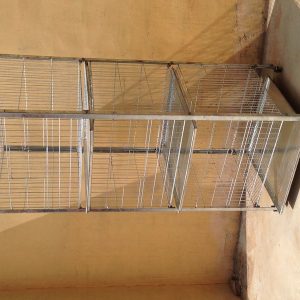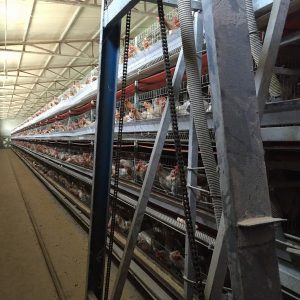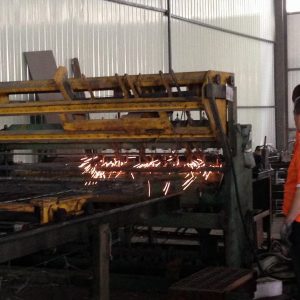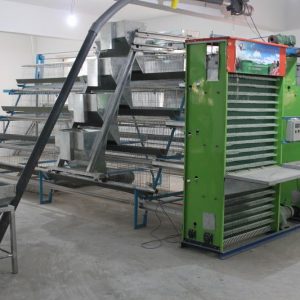
Essentials of Organic Piglet Breeding Technology
Organic piglets have low investment, low cost, and low risk. They can make full use of local and crop straws, which is a practical way for farmers. The following introduces the efficient breeding measures of organic piglets:
Organic piglet nutrition and rearing stage arrangements are closely related to the piglet’s weaning age, weaning weight, pen setting, group transfer arrangement and other factors, which are roughly divided into the following modes.
One-stage feeding mode
It should be said that the earliest domestically promoted feed is actually a one-stage feeding model. At that time, the pigs were mostly ternary Du Changben/Du Daben, weaned at about 45 days old, and then converted to small ones after 70 days of age. Pig feed. At the production level at that time, 60-day-old pigs weighed 15 kilograms, and the best could reach 19-20 kilograms (small group). Sows produced an average of 2 births per year, and the feed-to-meat ratio of the entire group was above 4:1.
The current universal suckling pig feed or some low-end suckling pig feed is more suitable for one-stage mode, suitable for pigs with late weaning and general breeds (pigs with better breeds are prone to weaning sows if weaning is too late Situation), the advantage of this model is that the feeding is simple and convenient, and the cost is low. Its disadvantage is that the production potential of piglets is not fully realized.
Two-stage and two-stage feeding mode
With the improved and hybridized sow breeds, foreign pig breeds and hybrid pigs have become the main breeds in large-scale farming. Weaning piglets in advance (reducing sow fatigue and promoting healthy growth of piglets) has become an inevitable requirement.
The original one-stage feed cannot meet the growth needs of piglets, especially when the weaning age of piglets is advanced, the transition from breast milk to feed is very important. On the basis of the original one-stage suckling pig feed, the company has launched special teaching materials for nutrient concentration, palatability and digestibility to meet the needs of piglet teaching and weaning. The usual use stage is teaching tank To 45 days old; later in order to ensure the health and rapid growth of the pig herd, a special material for the nursery stage-the nursery material was introduced. Its use stage is about 45 days to 70 days.
Three-stage and three-stage feeding mode
Organic piglet model is to solve the problems of stagnant growth of weaned piglets, low survival rate of nursery pigs and high proportion of stiff pigs.
Organic piglets have the potential for rapid growth, but due to various factors, more than 75% of the growth potential of piglets is not realized. In order to further advance the weaning age of organic piglets, and better prevent the negative growth and growth stagnation of piglets after weaning, at the same time solve the immunosuppressive problems such as blue ear disease and circovirus disease, which is conducive to the breeding of nursery pigs. Some two-stage feeding models have been improved, and a new three-stage feeding model has been introduced (teaching materials + pre-conservation materials + post-conservation materials).
The tank feed was further upgraded to meet the nutritional needs of piglets weaned at an earlier age, making the tank nutrient concentration higher, better digestibility, palatability and anti-dilution effect, and realized the actual feeding work For the purpose of teaching convenience and easy weaning, the daily weight gain of piglets can reach more than 300 grams within 10 days of weaning. The trough feed is used at the stage of weaning from 21 to 25 days old to 35 days old, the dosage is about 4 kg, and the piglet weight can reach 9.5-10.5 kg at 35 days old.
The evaluation of the teaching materials is not based on the level of nutritional indicators, palatability, feed intake, digestibility, and diarrhea resistance, whether organic piglets can achieve vigorous feeding within 3 days of weaning, and if the feed intake exceeds 600 Gram is currently the most advanced standard for judging troughs. “Weaning in 3 days” is the reason. If the daily weight gain of piglets differs by 50 grams within 10 days of weaning, the price of feed products can differ by at least 2,000-2500 yuan/ton.
In terms of nursery feed, the feed during the nursery period is optimized, and the pre-care feed is specially introduced. The age of use is also advanced to 35-42 days old. The pre-care period is a more delicate stage in the growth process of pigs.
At this stage, we must first achieve a change in nutrition, from high nutrient, high digestibility, high palatability of the teaching materials to the use of corn, soybean meal and other conventional raw materials processed conservative feed products, to avoid the occurrence of secondary nutritional stress .
Secondly, the early nursery period is also a period of high incidence of epidemics. Because the piglets are in the immune window period before and after weaning, the body’s resistance is low, resulting in a large number of pathogenic microorganisms multiplying in the body. In the early nursery period, the piglets often begin to show the corresponding clinical symptoms.
Third, in the early stage of nursery, the stress caused by the use of multiple vaccines is a huge challenge to the health and growth of piglets. Feeding specialized pre-care materials, in addition to providing high nutrient and high digestibility feed, can also promote the improvement of the body’s immunity, reduce the occurrence of piglet respiratory and digestive diseases, reduce various immune stress, and effectively improve the care The health status of the pigs in the early stage is beneficial to the growth of the pigs. The pre-conservation period is 35-42 days old to 49-56 days old.
This mode is also the most classic mode currently used by many farms.
Four-stage and four-stage feeding mode
Mother’s milk+teaching material+pre-care material+post-care material.
The four-stage model is mainly suitable for some ultra-early weaned pig farms, especially pig farms for ultra-early isolation and weaning in order to purify specific diseases. Of course, it can also be used for the treatment of milkless piglets or abnormally suckling piglets. The main difference between this model and the three-stage feeding model is the addition of the first-stage feed similar to breast milk.



